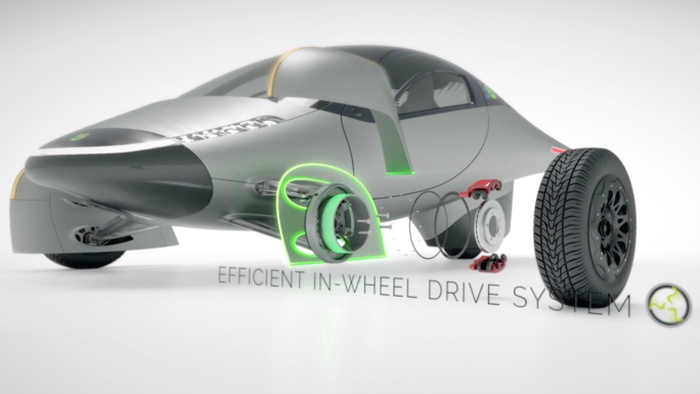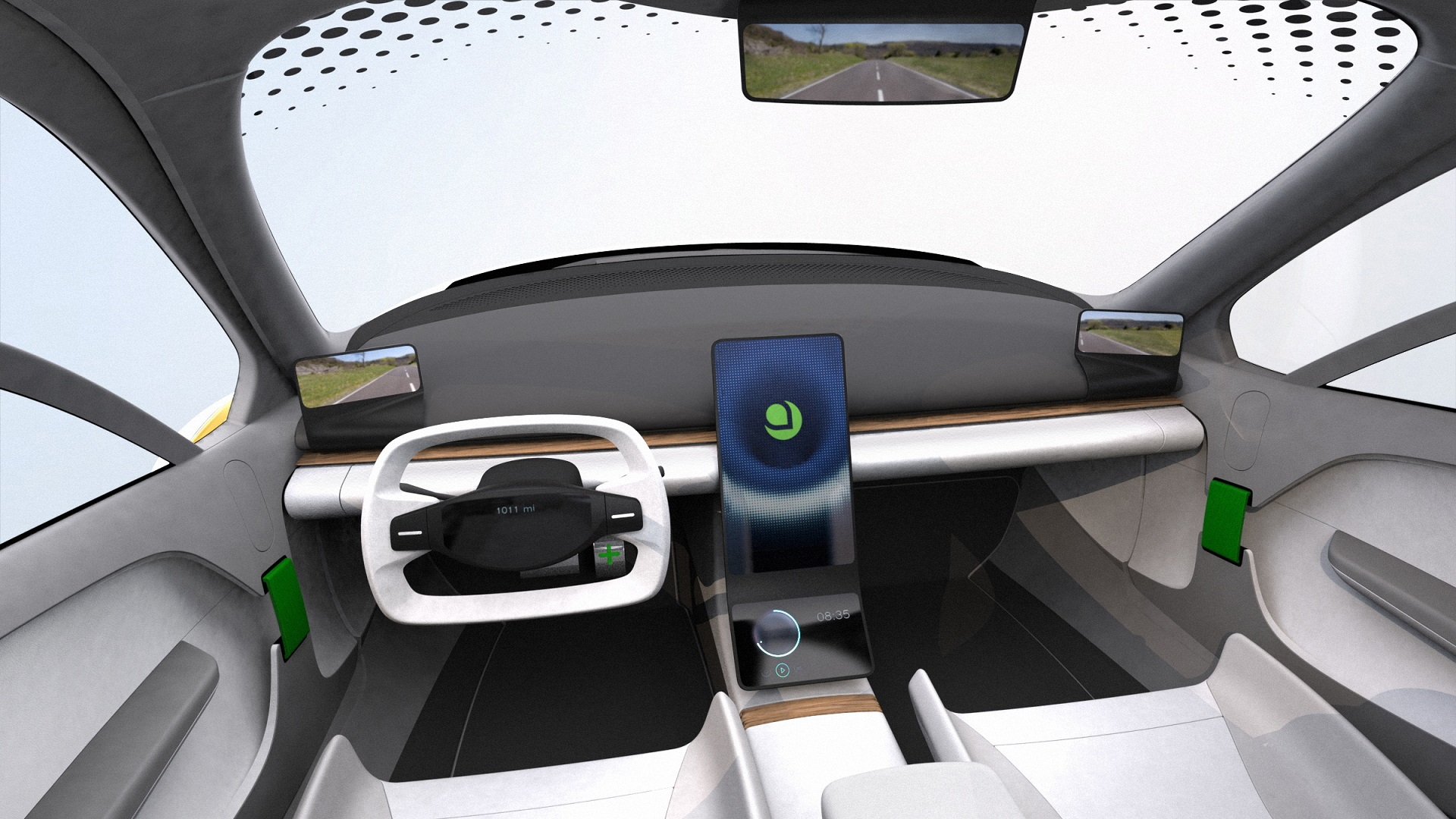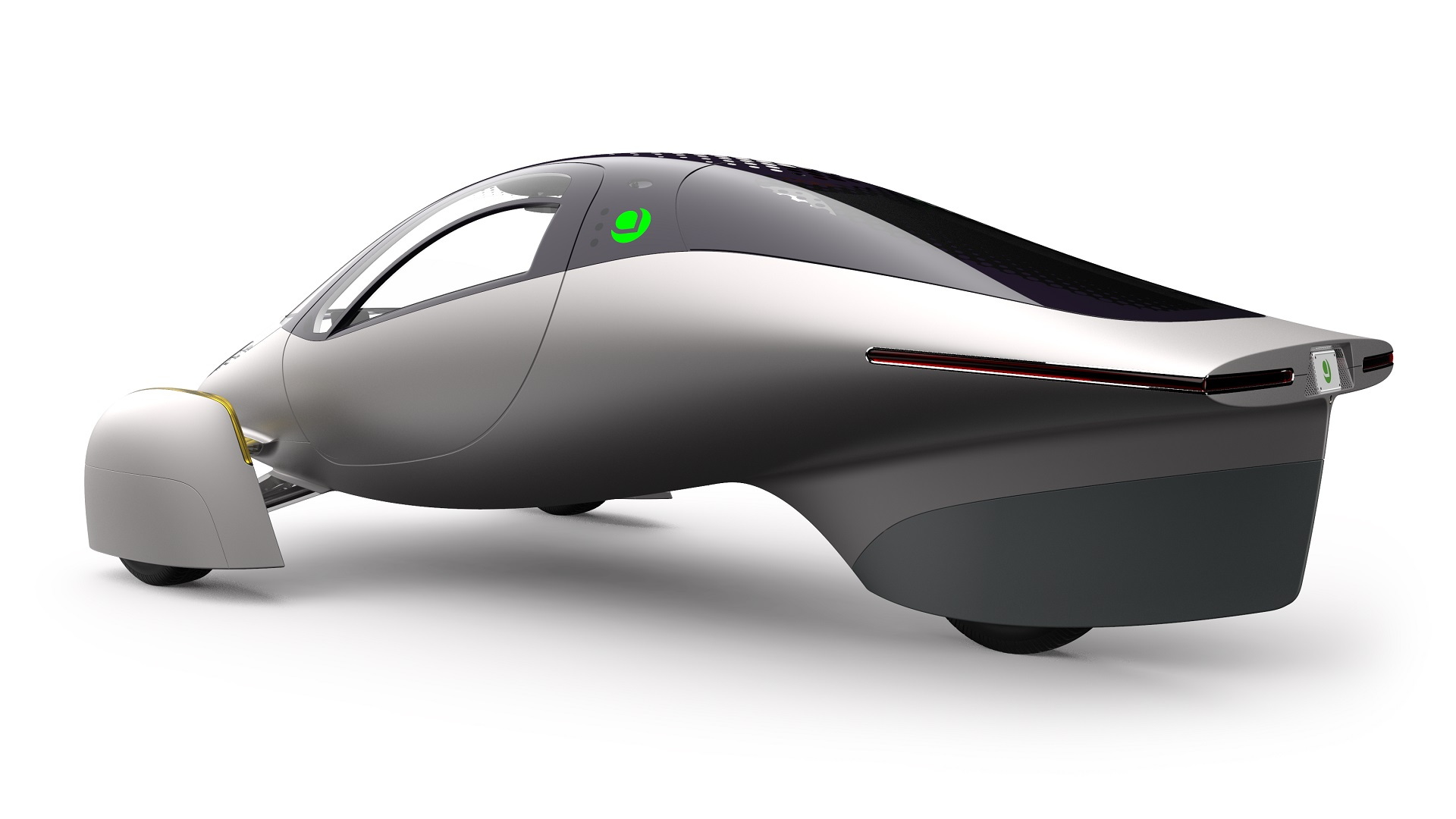Aptera, self-proclaimed builder of the world's most efficient passenger vehicle, is partnering with Elaphe Propulsion to bring in-wheel motor technology to its 1,000-mile electric two-seater.
If Aptera rings a bell but you can't quite place it, it was a company that was seeking funding to build a hyper-efficient, three-wheel electric car way back in 2009. The concept looked more like a college engineering project than a conventional automobile, and while the two may have had next to nothing in common, Aptera ended up folding in 2011, after it was unable to secure low-interest loans to keep the program going.
But it's back. Thanks to crowdfunding, the project has a fresh tailwind. In the intervening years, Aptera's original co-founders quietly bought up the IP associated with the original concept and moved forward with refining the design into something more production-ready. It still has the private-plane-on-wheels looks, but underlying tech is ready for prime time.
This latest partnership is the next step toward proving that out. With in-wheel motor technology, Aptera can bypass the need for a traditional steering rack and simply use power-vectoring directional control instead.
"Elaphe is a perfect match for Aptera," said Elaphe CEO, Gorazd Lampič. "We provide the packaging versatility and turning needed to enable Aptera’s industry-best efficiencies."
Aptera is not the first EV hopeful to jump on the motor-in-wheel bandwagon. NEVS, which is working on an autonomous taxi pod, recently purchased the company behind a similar motor setup and hopes to implement it in a way that allows for 360-degree steering for optimum maneuverability and versatility in urban environments.
Not all automakers agree about whether in-wheel motor technology has matured to the level of durability expected for production cars, but its adoption is expected to accelerate as demand for urban mobility solutions increases.


















